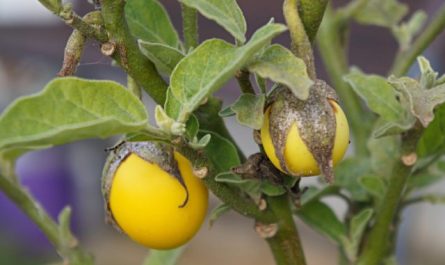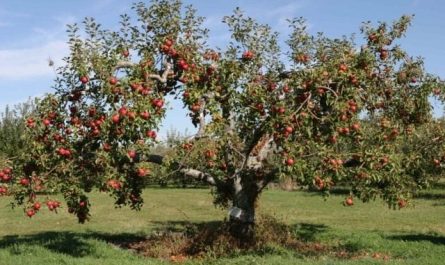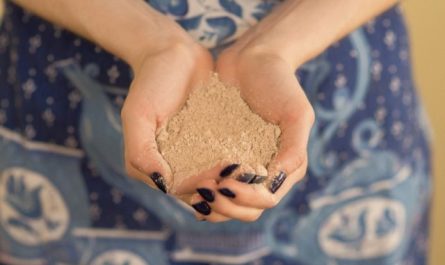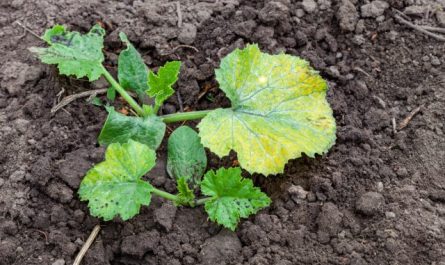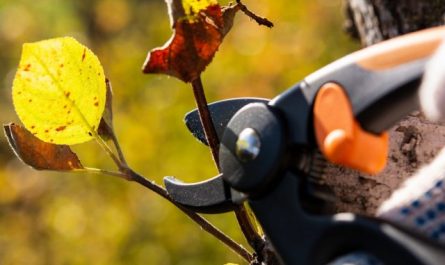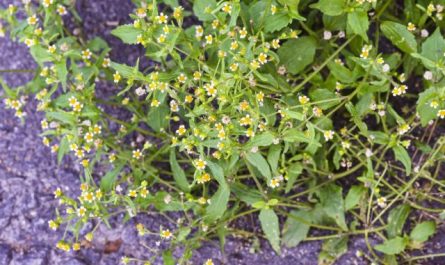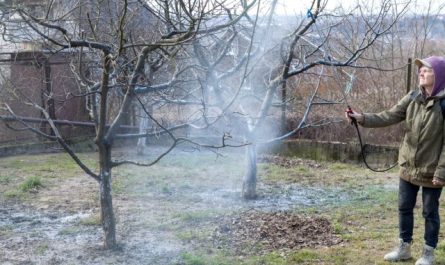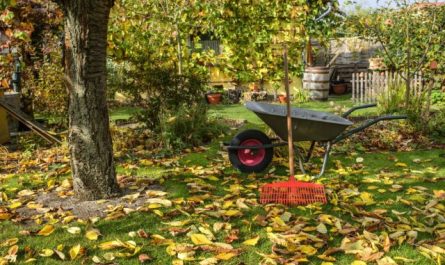At my first dacha, I collected a small collection of gooseberry varieties resistant to powdery mildew. All the varieties were good and generally suited me. But, unfortunately, gooseberries had more disadvantages, and I never found “that one” variety that would be impossible to tear myself away from (like in childhood). Therefore, I decided that there would not be a single gooseberry bush on my new plot, and I would plant its alternative – yoshta. What kind of berries are these and how are they better than gooseberries? I will tell you in my article.

What is yoshta?
In our country, this unusual crop is sometimes half-jokingly called “smorzhovnik” – from the abbreviation of two words, “currant” and “gooseberry”. The real name of this plant, in fact, was formed in this way. But since the hybrid was created in Germany, its name is based on two roots of the German words “Johannesberry” (currant) + “Stachelberry” (gooseberry). Like its ancestors, the crop belongs to the Gooseberry family (Grossulariaceae).
It would seem that currants and gooseberries are two closely related plants from the same family, similar in appearance to each other, and their hybridization should not be a problem. However, in fact, breeders did not immediately succeed in creating such a crop, since the plants obtained from such a union turned out to be sterile.
The first crosses between currants (Ribes × succirubrum) and several varieties of gooseberries were carried out by the outstanding Soviet biologist Erwin Bauer back in 1922. At that time, he called the result of his work “yoke”. The goal of scientists at that time was to breed berries resistant to powdery mildew, but they failed to create truly worthy varieties. Such work was crowned with success only in the 1970s, when the breeder Rudolf Bauer from Southern Germany (FRG) managed to obtain fertile offspring of currants and gooseberries, which produced abundant and tasty berries.
Joshta (jostaberry) is a complex hybrid species obtained by crossing blackcurrant (Ribes nigrum) from gooseberries (Ribes grape-crispa) and American “wild” gooseberries (Ribes divaricatum). It is a spreading, sparse bush up to 180 cm high. The shoots are practically thornless, arcuately curved, the leaves are small in shape, like those of gooseberries, but a little smaller than them.
The fruits are more similar to small, slightly pubescent gooseberries, but can also vaguely resemble currants. The average weight of a berry is about 3 grams, although individual fruits can reach 5 grams. The fruits grow in small clusters of three to five pieces. The color varies from brown-burgundy to almost black. The berries taste sweet with a very slight sourness, which practically disappears when fully ripe, and at the same time the characteristic muscat flavor of the fruits intensifies.
If you pick slightly underripe jostaberries, the sourness will make the berries taste more like gooseberries. But as they ripen, they become closer to sweet varieties of blackcurrant (although you can’t call their taste currant, it turns out to be more original and interesting).
The ripening period of yoshta is mid-June-July, fruiting is extended, the fruits do not ripen at the same time. The yield is regular and quite high. In addition to fresh consumption, yoshta fruits are suitable for making compotes, jams, jellies and juices. They can also be used to make liqueurs. The berries can withstand prolonged freezing without reducing their quality. The fruits are rich in vitamin C, but its content is slightly less than in currants.

Yosta varieties
The very first variety of yoshta is called “Yes” (josta). It was bred by the creator of the culture Rudolf Bauer. Although it has been bred since 1977, the cultivar is still difficult to find for sale. The height of the bush is about 1,5 m. Fruiting begins at the end of June and continues until the end of July. The berries are dark burgundy in color, up to 15 mm, with a slight sourness and a pleasant aroma.
Another variety of yoshta appeared in 1989, it is called “Yostin” (Jostine). Its fruiting begins in early July. The fruits are medium-sized and dark red. The bushes are vigorous, strong, and highly resistant to various diseases.
Joshta “Rikyo” (Crime) — Hungarian variety, which appeared in 2001. The harvest can be collected in early July, the fruits are medium-sized, dark, very aromatic. The bushes are vigorous and strong.
Joshta “Ionova” (Jonova) is distinguished by the unusual color of the fruits, from garnet to dark red. The berries are large and shiny. All the fruits on one bunch ripen at the same time. Another difference is weaker growth compared to other varieties.
In the cultivar’s homeland, there are many varieties of yoshta. But in our country, this bush is not so easy to buy, and there is no need to talk about varietal diversity. Most often, such a hybrid appears on sale under the name “yoshta” without specifying the varietal affiliation and, most likely, is the very first variety of “Yoshta”, created in Germany back in 1977.
If you managed to buy a real yoshta, then this can be called luck. Since unscrupulous sellers often pass off golden currant as yoshta, which blooms abundantly with long clusters of rather beautiful bright yellow flowers (yoshta flowers are not decorative, reddish, similar to gooseberries). The berries of golden currant are almost black, like currants, which is also not typical for yoshta.
But buying golden currant instead of jostaberry is still okay. It is much more unpleasant to buy a hybrid of unknown origin, which cunning sellers call either jostaberry, or thornless gooseberry, or simply a currant-gooseberry hybrid. The main feature of this crop is the very rapid growth of vegetative mass (which is very profitable for sellers).
But you won’t get a decent harvest from it, since this unsuccessful hybrid is exactly the problem that the first yoshta breeders encountered in full – an extremely low yield. At best, you will see 5-10 berries on a huge bush, the taste of which leaves much to be desired. If you encounter such a plant, then know that it is not the yoshta that is discussed in this article.

Growing yoshta
Jostaberry is a very hardy plant, capable of withstanding temperatures down to -32 degrees, so it does not require any shelter. The crop is easily grown on moisture-intensive but well-drained loamy soil of average fertility. At the same time, it will grow best on sandy loam, but does not like very heavy clay, chalky soils and too dry soils. In general, it can successfully bear fruit on most types of soil, if a large amount of organic matter is added to the soil.
Jostaberry will grow best in full sun. It is quite tolerant of shade, although it does not bear fruit as well as sunny areas.
When choosing a place to plant jostaberry, you should take into account that to increase the yield, it needs to be close to currant bushes, which will serve as pollinators. Also remember that this is a spreading bush that will take up a space of 1,5 to 2 meters.
Jostaberry bushes love abundant, timely watering, especially when young, but adult plants can easily withstand drought.
The plant can grow and bear fruit without additional fertilizing. However, to increase the yield, it is better to feed the bush, in particular, in the spring it is necessary to add nitrogen fertilizer, during the flowering period – phosphorus-potassium, and in the middle of summer you can add organic matter under the bushes.
When caring for jostaberry, it is better to do without a hoe and deep loosening of the trunk circle, since this shrub has a shallow superficial root system. Instead of loosening, regular mulching with compost and annual renewal of the mulch layer in the spring are recommended.

Why did I choose jostaberries over gooseberries?
As I wrote above, gooseberries have too many disadvantages for me, which are not found in jostaberries. How is jostaberries better than gooseberries?
Firstly, jostaberries are not affected by powdery mildew at all. Among modern varieties, there are many cultivars that are also distinguished by increased resistance to this scourge. But, unfortunately, my experience has shown that they are not as tasty as old varieties, which have become too difficult, and sometimes impossible, to grow due to this fungal disease. When growing jostaberries, you don’t have to worry about powdery mildew; you will have a harvest every year.
Secondly, the crop, in addition to being tolerant to powdery mildew, is resistant to blackcurrant leaf spot, double flowers and gall mite. I have also never observed any pests on jostaberry, and, apparently, aphids do not like this hybrid shrub as much as they do currants.
Thirdly, wonderful taste. Unfortunately, it is very difficult to find a truly tasty and sweet gooseberry, since most varieties, in my opinion, are still sour. The situation is especially aggravated by the skin, which almost always adds sourness to gooseberries, and sometimes very strong. Jostaberries do not have such a feature, currants gave this berry a thin and not at all sour skin. Fully ripened jostaberries are not sour at all, but have a very pleasant sweet and not cloying taste.
And what I especially appreciate in jostaberries is the divine flavor of ripe berries, which is called muscat, and to me it reminds me of my favorite flavor of grape juice. Few varieties of gooseberries can boast of its presence, and it is not so pronounced in currants either.
Another undoubted advantage of jostaberries is the absence of strong shedding, which is common with many varieties of gooseberries. Jostaberries usually do not shed, but wrinkle, like currants, remaining on the bush, and can turn into almost raisins.
The thorny nature of gooseberries is legendary, and it is often necessary to pick them practically in canvas gloves, and when picking them with bare hands, you return as if from a battlefield. Josta is absolutely not a thorny bush, except for a few individual thorns at the base of the bush, but there are no berries in these places, so it is very difficult to prick yourself with these thorns. And in the upper part of the branches, where the entire harvest is concentrated, there is not a single thorn.
The next advantage is convenient harvesting. Many gooseberry bushes are low-growing and you have to literally pick the berries on your knees. In addition, the branches often spread along the ground, which makes the berries dirty unless you put supports under the bush. Without special shaping, gooseberry bushes tend to thicken, which further complicates harvesting, and some berries remain in the thicket of thorny branches. But harvesting yoshta is truly a pleasure. The bushes themselves are sparse, and their berries hang openly on arcuately curved branches, always in plain sight, just reach out your hand.
Unlike gooseberries, jostaberries can produce crops with virtually no care. The bush does not need to be shaped or fertilized.

Are there any disadvantages?
The only downside I can point out about jostaberry is that it is a very sprawling and not at all compact bush, which takes up a certain amount of space in the garden. Personally, for me, this feature is not a problem. We do not make winter preparations from jostaberry, and for summer compotes and eating from the bush to our heart’s content, two bushes are quite enough for us, which do not crowd out other plants in the garden that much. But walking around our Garden, I often see jostaberry bushes planted outside the summer cottage, in front of the fence. That is, many people found the size of the jostaberry bushes too big for their garden.
As for the yield, it must be admitted that high-yielding varieties of gooseberry, with good care, produce much more fruit. But for me, this is more of a problem with gooseberries. Picking half a bucket of gooseberries from a bush is very tiring. And, most importantly, after that, I simply did not know what to do with the harvest! We do not like gooseberry jam and compotes, gooseberries rot in an electric dryer, and you can’t eat so many fresh at once. Josta gives berries no more and no less than our needs, allowing you to eat your fill and not rack your brains over how to “fight” the harvest.
In general, I will definitely plant jostaberries instead of gooseberries. But this hybrid cannot replace currants for me. After all, jostaberries are an analogue of gooseberries, and their taste is an improved version. Currants have a completely different, unique, currant-like taste, which, in my opinion, is not at all similar to jostaberries.


